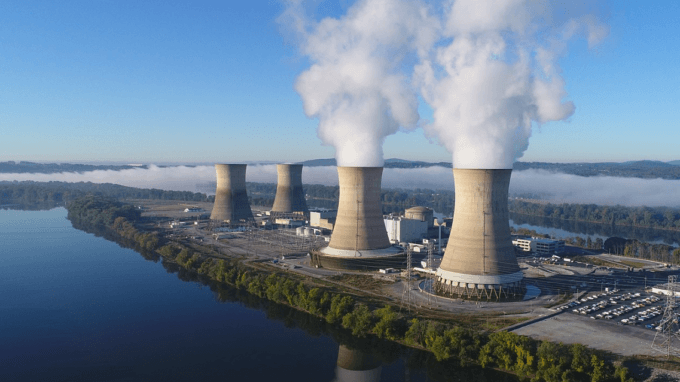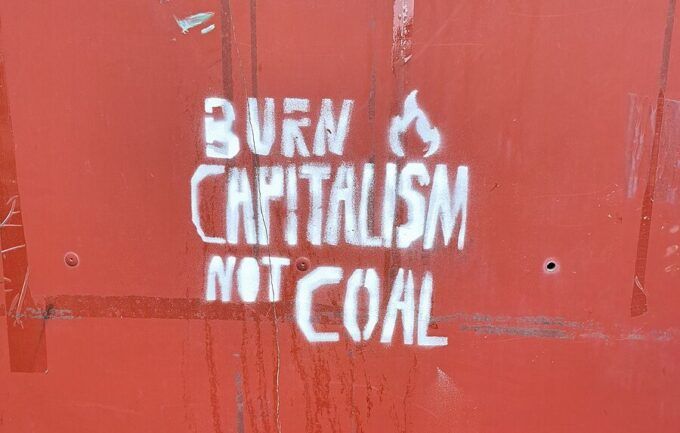New York Times Minimizes Impacts of Three Mile Island

Image courtesy of Exelon.
The New York Times minimized the impacts of the Three Mile Island nuclear power plant accident in its obituary this week for Joseph Hendrie, the chairman of the U.S. Nuclear Regulatory Commission at the time of the accident. Hendrie was removed from the NRC chairmanship eight months after the accident because, as then President Jimmy Carter put it, under Hendrie’s helm the NRC was “unable to fulfill its responsibility for providing an acceptable level of safety for nuclear power plants.”
The Times reported that in its obituary for Hendrie.
There was a “pull quote” in the middle of The Times piece: “He was fired after the meltdown at the nuclear power plant.”
But a reader would not know exactly what the problem was by reading the obituary Monday, written by Trip Gabriel, a national correspondent of The Times.
Of the Three Mile Island accident, “Minimal radioactivity was released, and there were no immediate deaths,” Gabriel writes in its fourth paragraph. “But official miscommunication and lingering confusion over the severity of the threat inflamed a long-running national debate about nuclear safety. Movie theatres that year were showing ‘The China Syndrome,’ a hit thriller about a nuclear plant disaster. Nearly 200,000 protesters turned out in New York City six months after Three Mile Island for an antinuclear rally.”
Among researchers determining that there were substantial deaths as a result of Three Mile Island radiation releases have been Steven Wing and his colleagues at the University of North Carolina. “Study Links Three Mile Island Radiation Releases to Higher Cancer Rates,” was the 1997 article by Joby Warrick in the Washington Post.
It began: “Researchers have linked radiation releases from the Three Mile Island nuclear plant to higher cancer rates in nearby communities in a study that could reopen debate over the nation’s worst commercial nuclear accident. The report, released today, concludes that increases in lung cancer and leukemia near the Pennsylvania plant suggest a much greater release of radiation during the 1979 accident than had been believed. Previous studies concluded that radiation exposure to humans was minimal. A 1990 Columbia University analysis using the same data as the new study found no clear connection between the accident and cancer rates among residents living near the plant.”
It quoted Wing, an associate professor of epidemiology, saying: “The cancer findings, along with studies of animals, plants and chromosomal damage in Three Mile Island area residents, all point to much higher radiation levels than were previously reported.”
The research was published in Environmental Health Perspectives, the journal of the U.S. National Institute of Environmental Health Science.
Science magazine in a 1997 article reported that “After reexamining the region’s cancer statistics and measured radiation levels, epidemiologist Steven Wing and his colleagues at the University of North Carolina, Chapel Hill, concluded that more radiation may have escaped than was measured and that the risk of some cancers did rise. Wing found that people presumed to have been exposed to the highest doses of radiation were almost twice as likely to develop lung cancer as were those who received the lowest doses. His team also found that the risk of adult leukemia was almost seven times higher for those in the highest exposure group.
The book “Killing Our Own: The Disaster of America’s Experience with Atomic Radiation” devotes many pages to the Three Mile Island accident including in a chapter titled “People Died at Three Mile Island.” Published in 1982, it was authored by Harvey Wasserman, a journalist who has specialized in nuclear power; Norman Solomon, an investigative reporter and media critic; and Robert Alvarez and Eleanor Walters, director of and associate director of the Environmental Policy Center in Washington, D.C. Alvarez also was senior policy adviser to the U.S. Energy Department secretary and a senior investigator for the U.S. Senate Committee on Governmental Affairs.
The book presents research done on cancer and the Three Mile Island accident including that of Dr. Ernest Sternglass, long professor of radiation physics at the University of Pittsburgh School of Medicine. It quotes Sternglass in 1981 stating: “The Three Mile Island accident will turn out to have produced the largest death toll ever resulting from an industrial accident, with total deaths from all causes likely to reach many thousands over the next 10 to 20 years.”
I wrote and presented a TV documentary in 1993, “Three Mile Island Revisited,” beginning with, standing with the Three Mile Island plant in the background, saying: “The nuclear industry says that nobody died because of the accident back there at Three Mile Island but don’t tell that to the people here in Goldsboro or others living in what’s become a valley of death surrounding Three Mile Island.”
I conducted interviews about how cancer had become widespread in and around Goldsboro and how quietly the owner of Three Mile Island had given cash settlements, some as high a $1 million, to members of families of those who died or were left with health impacts as a result of the accident.
A superb new documentary on Three Mile Island is “Radioactive: The Women of Three Mile Island” which was released last year and is being widely shown throughout the world. Directed, written and produced by Heidi Hutner, a professor of environmental humanities at Stony Brook University, it has received many awards.
In it, resident after resident of the area around Three Mile Island is interviewed and tells of widespread cancer that has ensued in the years that have followed the accident—a cancer rate far beyond what would be normal. Accounts shared in the documentary are heartbreaking.
In “Radioactive,” a whistleblower who had worked at the nuclear plant tells Hutner of the deliberate and comprehensive attempt by General Public Utilities, which owned TMI, to cover up the gravity of the accident and its radioactive releases, especially of cancer-causing Iodine-131 and Xenon 133.
An attorney, Lynne Bernabei, involved in litigation in the wake of the accident, says the Three Mile Island “cover-up was one of the biggest cover-ups in history.”
The Times obituary for Hendrie, a physicist, points out that he was a booster of nuclear power. It relates: “Dr. Hendrie, who was appointed by President Jimmy Carter in 1977 to lead the Nuclear Regulatory Commission, the government agency in charge of nuclear power safety, came in as a proponent of nuclear energy, criticized by environmentalists as too supportive of the industry.” It quotes Hendrie as saying when he was appointed: “My biggest challenge will be to keep nuclear power as a viable energy option.” Gabriel writes that Hendrie “pledged to end ‘the tortuous and Kafkaesque hearings’ on proposed nuclear plants.”
And even though Hendrie was bounced from the NRC chairmanship in the wake of the Three Mile Island accident, he “remained one of the five members of the regulatory commission through the end of his four-year term in June 1981,” it adds. And, “in March of that year, President Ronald Reagan reappointed him chairman in an acting capacity.”
Then Hendrie, the obituary continues, “returned to the Brookhaven National Laboratory in Upton, N.Y., where he had worked for two decades before joining the regulatory commission. In the 1960s, he had helped design and build a type of research reactor, the High Flux Beam Reactor, which provided very intense beams of neutrons.”
There was no mention in The Times obituary about what happened to the High Flux Beam Reactor. It was shut down in 1997 after it was found to be leaking radioactive tritium into the groundwater under Brookhaven National Laboratory—groundwater that flows into the community just south of the laboratory, Shirley. “Welcome to Shirley: A Memoir from an Atomic Town” was published in 2008, written by Kelly McMasters, a professor at Hofstra University who grew up in Shirley. In the book, she writes of the widespread cancer among people in Shirley which she links to the “nearby leaking nuclear laboratory.” Hendrie’s Brookhaven National Laboratory is a Superfund high-pollution site.
The obituary ends with a paragraph in which Gabriel writes: “Most recently, new interest has arisen in nuclear power as the largest source of non-carbon emitting energy at a time of heightened awareness of the climate crisis.” Not mentioned is how the nuclear fuel cycle—including mining, milling and enrichment—is carbon-intensive, and nuclear power plants, as did that High Flux Beam Reactor, emit carbon, radioactive Carbon-14.
I started writing my first book on nuclear power the day of the news of the Three Mile Island meltdown happening. In the book, first published in 1980, “Cover Up: What You Are Not Supposed to Know About Nuclear Power,” in a chapter with a focus on the press and nuclear power, I quote Alden Whitman, a reporter at The New York Times for 25 years, telling me that “there certainly was never any effort made to do” in-depth or investigative reporting on nuclear power. Why this attitude? “The Times does regard itself as part of the establishment…They get nervous when they attack industry. Certainly when they attack industry that is heavily involved in finance and the banks as nuclear power is, they would get very up tight.” Even in the wake of Three Mile Island, said Whitman, The Times’ stories on nuclear power have been “tucked away, put in the middle of the paper.”
This tradition continues at The New York Times.



